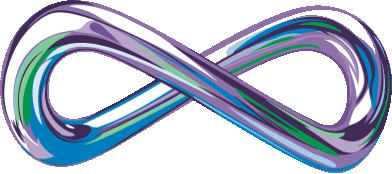The global economy continues to be fueled by quickly flowing information, swiftly generated knowledge, and the myriad applications found for this information and knowledge. The new global economy is characterized by increased uncertainty, openness, flexibility, and choices, all of which impact lifestyle, business models, the working environment, the educational system, and national security.
The United States is the largest consumer in the world, as well as the largest exporter and importer, and accounts for more than one-quarter of global economic output. Yet, the U.S. economy cannot stand alone—it is an integral part of the global economy. Globalization in technology, jobs, and trade affects almost all sectors and industries both specifically and broadly. The creation of disruptive technologies is being affected by the globalization of information and trade, which in turn results in the globalization of jobs and affects the social
environment.

On the global stage, increased production with less manpower and at lower cost is becoming the continual goal of all operations, making consistently increased productivity a relentless target. This goal stimulates profound changes in the structure and distribution of global and local job markets. For a given industrial function, the productivity bar has sharply risen, and fewer workers are required than a decade ago to perform an equivalent function. This productivity-driven environment intensifies outsourcing and offshoring, which have been evolving for many years even though only recently did their effects on jobs become more obvious.
During the half-century after WWII, the transition from basic agriculture to advanced manufacturing drastically transformed some European and Asian countries, such as Korea, Taiwan, Singapore, and Ireland.
Another paradigm shift occurred more recently. The offshore operations of U.S. corporations, whose initial function was manufacturing, have changed to scientific research and technology development. During the 1970s and 1980s, Ireland and Singapore were the manufacturing centers of Europe and Asia, respectively. Today, they are redirecting larger portions of their workforce to pursue higher-value activities such as scientific research, intellectual property creation, and system design and integration rather than supplying low-cost labor for assembly and manufacturing.
Implications and solutions for boards, CEOs, management teams, and employees across all industries and regions, disruptive change is the new normal. Technology, globalization, evolving customer behaviors, and a host of other factors are creating a highly dynamic business environment in which companies must constantly adapt or be overtaken. In some cases, the change is incremental and slow-moving; in others, it is radical and immediate. But all change can be highly disruptive—at both the organizational and personal levels.
Management may understand all of that, and yet many of the efforts to manage and implement change fall short because they don’t examine the underlying psychological factors all human beings experience in the face of change. In periods of upheaval, people tend to revert to learned, predictable behaviors that may have worked for them in a more ordered past but that can limit their or their organizations’ performance during a crisis. People can get rigid, hunker down, or even freeze. This can become a substantial problem among employees, whose behaviors in the face of change can have a huge impact on a company’s performance. The effects are magnified, however, for the executives leading the company, and their rigid and maladaptive behaviors will have a proportionally larger impact.

Understanding the psychology of disruptive change can help executives manage such responses both in themselves and in their organizations. By learning how to identify maladaptive behavior and convert it to more-productive responses, executives will become better able to take the disruption as a genuine learning experience for themselves and their teams, steer their companies through a highly dynamic business environment, avoid obsolescence, and—most important— embrace new opportunities.
Three Phases of Disruption
The first step to managing disruption is to understand how individuals actually experience it and how they can potentially be changed by it. There is a distinction between the external event of change and the internal process of transition that each individual goes through in response to that change. Any kind of change involves not only something new but also the end of something old and familiar, and there is a period of uncertainty between the two.1 What prevailing models tend to describe from a psychological perspective, however, is a return to baseline (e.g., “acceptance”), whereas developmental psychology reminds us that people normally do not return to the same place after a disruption. In fact, it is the very
experience of “unfreezing” that prompts us to grow and develop, to think differently, and to understand things in new ways. So, a model of the human experience of—and response to—change or disruption must be one of adaptation. Only in the minority of cases do people expend, albeit unconsciously, the significant energy required to remain “frozen,” to rigidly defend against adapting to change.
Phase 1 represents the initial disruption. To most people, this feels like loss or even a threat. Common reactions are fear, anxiety, acute stress, and grief. The fight-flight-freeze response often gets activated, and people might become rigid in their behavior and closed down in their thinking.
Phase 2 represents the processing period, in which participants begin to make sense of the change. They may continue to experience some of the reactions from the first phase—such as fear, anxiety, and self-doubt—yet as they process the change and work through it, they may begin to look to the future, feeling curious, accepting, and hopeful. This is the path of adaptation that is typically led by a talented executive who can acknowledge the real threat inherent in change but who can also create an environment in which people can see real advantages to opening up. Some, however, may not be able to make the transition and instead may remain rigidly fixed in negative emotions and maladaptive coping.
Author: Dave Gajadhar - Sustainability, Innovation, and Creativity system thinker.
“I solve complex business problems with undefined parameters”
Contact us: ResultantGroup Your business modernization, transition, and blockchain advisors.
Email: dgajadhar@resultantgroup.com
Twitter:
@dgajadar
@ResultantGroup – Simplifying business complexities

Commenti